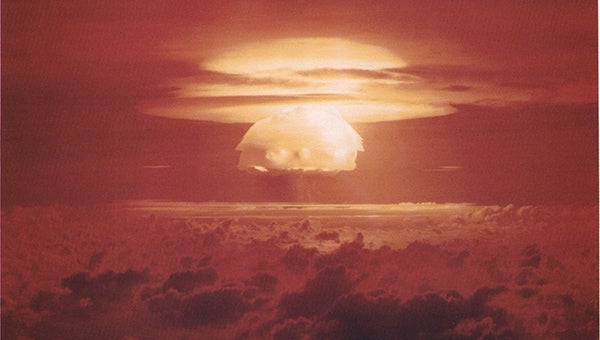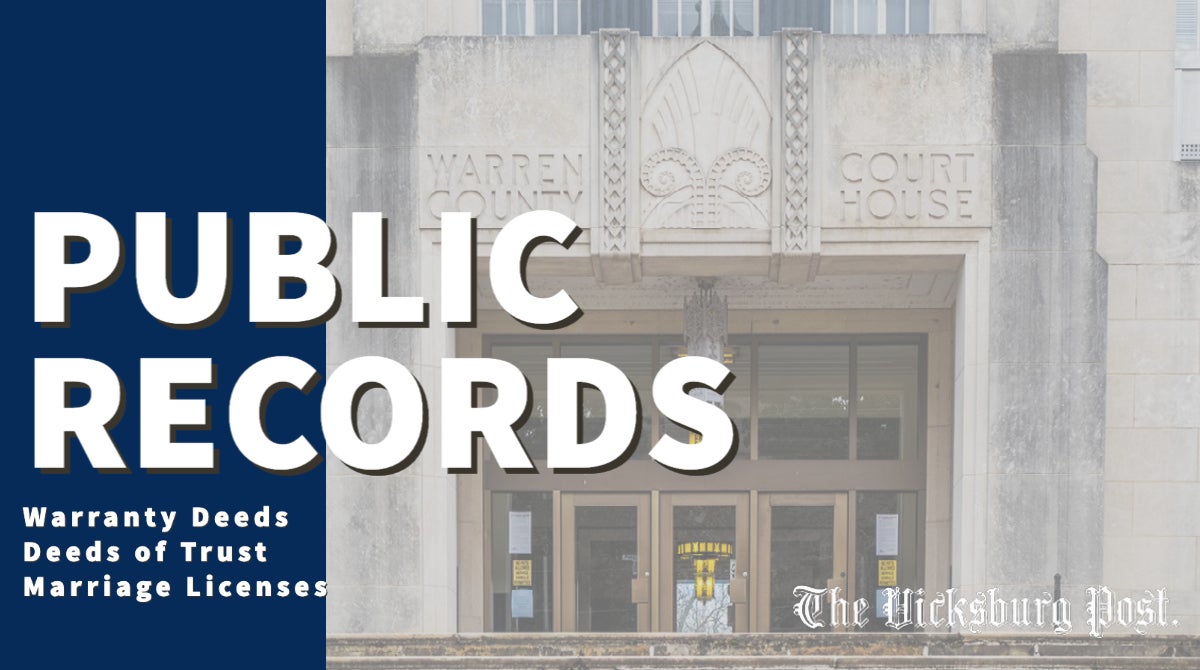A secret kept 60 years: Vicksburg veteran took part in six atomic weapon tests
Published 12:53 am Sunday, May 3, 2015

ATOMIC TEST: Edmund McMaster was an eyewitnes to Castle Bravo, the code name given to the first U.S. test of a dry fuel hydrogen bomb.
The confession came as Edmund McMaster was watching a movie with his granddaughter.
For more than 60 years even through his battles with cancer, McMaster never uttered a word to his closest friends or family about the role he had played and the things he witnessed in middle of the Pacific Ocean in 1964.
“She asked something about explosions, and I told her I had seen the hydrogen bomb,” said McMaster, now 82.
In March and April 1954, a tall, lean 22-year-old McMaster stood on the fo’c’s’le of the USS Belle Grove at Bikini Atoll in only his Navy-issued dungarees as he watched three separate atomic blasts.
“Some of them were given shades that looked to me like nothing but welder’s goggles,” McMaster said. “I wasn’t lucky enough to get some. The ones who didn’t get the goggles were told when it exploded and they would tell you to put your arms over your eyes and brace.”
He could see the shockwave coming in the ocean.
“There were no rails to hold on to, you just stood there. It would move you around. It was a slap, just like somebody walked up and hit you,” he said.
McMaster has long forgotten the top-secret code names given to each weapon in Operation Castle, instead calling each one of them “the bomb,” except for Castle Bravo, which he refers to as the H-bomb. Castle Bravo at the time was the largest nuclear bomb ever detonated.
The results of each blast, he said, were devastating, yet serene.
“Well,” McMaster said, pausing briefly. “It’s one of the most beautiful sights you’ll ever see. It’s every color in the rainbow, every color there is I guess.”
Operation Castle was a top-secret mission testing the feasibility and designs of a new type of thermonuclear weapon using a dry hydrogen isotope. In all six bombs were tested, but he was below deck in the engine room for three of the blasts. The Belle Grove was a dry dock ship used to haul the nuclear weapons from nearby Enewetak to Bikini.
No one — not even the best nuclear scientists in the world — was certain how dangerous the radiation from Operation Castle would be.
“We were supposed to be 35 miles away from the H-bomb, but we weren’t. They miscalculated and we were closer than what we thought,” McMaster said.
The distance wasn’t the only miscalculation with the largest atomic bomb ever detonated by the United States military.
Castle Bravo weighed approximately 23,500 pounds. It was expected to detonate with a force of 4 to 6 megatons of TNT, but when the bomb went off the blast was measured at 15 megatons, making it a thousand times stronger than the bombs dropped on Nagasaki and Hiroshima in1945.
The mushroom cloud that formed after Castle Bravo’s detonation grew to nearly four-and-a-half miles wide and reached a height of 130,000 feet six minutes after the detonation. The crater left behind was 6,510 feet in diameter and 250 feet deep.
No one had expected this.
Fallout rained down over 7,000 square miles, poisoning American servicemen and natives of the nearby Marshall Islands. The Belle Grove was contaminated in the explosion, which McMaster said he believes contributed to his cancer diagnosis almost a dozen years ago.
“There’s no definite proof. In my own personal opinion, I don’t know. We had three different points on the ship that were contaminated. They said there was not enough contamination for any of us to worry about,” McMaster said.
At the time, the Navy also denied anyone would be made ill by the miscalculations involved in the Bravo mission.
Over 11 years ago, McMaster was diagnosed with chronic lymphocytic leukemia. In 2014, he was diagnosed with lymphoma and recently completed eight months of chemotherapy.
Yet until about Christmas 2014, he never spoke of his past work in nuclear testing.
“I said Edmund must can keep a secret because we found out last year,” Josephine McMaster said.
McMaster said he signed a document saying he wouldn’t talk about the testing for at least 10 years. But when the time passed, he wasn’t eager to share any details.
“I just thought it was part of my job,” he said.
Since McMaster revealed his nuclear secret to his family, they have been working to get compensation from the government set aside for veterans sickened by fallout.
“The money has been appropriated by Congress. It’s not enough money, but it’s some money,” said Wayne McMaster, Edmund’s younger brother.
After more than 10 years in the navy, Edmund McMaster worked for the Corps of Engineers until his retirement.





